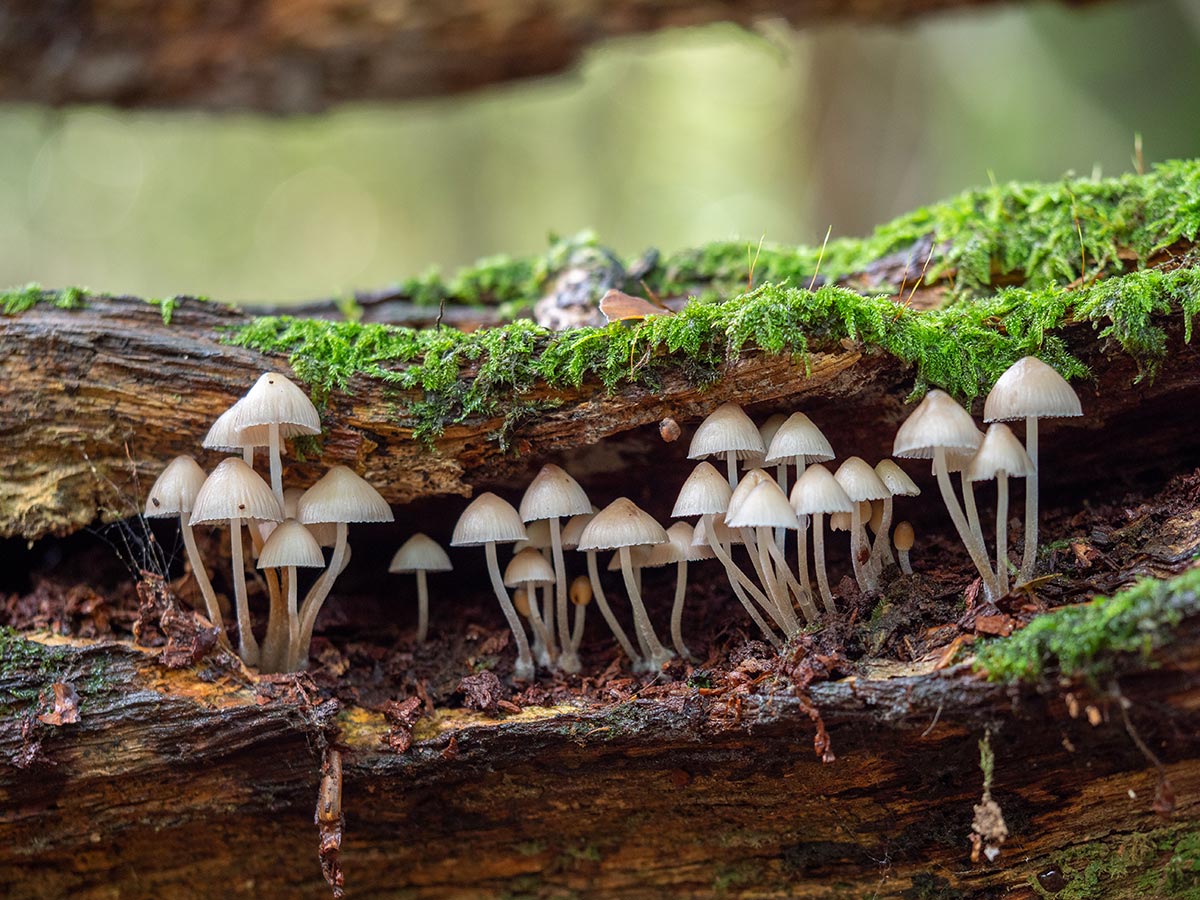I didn’t set out to become a “fungi person.” In fact, for much of my life, I barely gave mushrooms a second thought. But over the years, as I worked in forests, studied biology, and explored ecosystems up close, fungi revealed themselves as some of the most fascinating, important, and downright weird organisms on the planet. And, perhaps unexpectedly, they also saved my curiosity.
Discovering the Hidden Kingdom
The first time I truly noticed fungi, I was walking through a forest on a rainy afternoon. I stopped to examine a fallen log, expecting to see the usual moss and insects. Instead, I found a web of tiny white threads weaving through the wood. Those threads were mycelium—the hidden “root system” of fungi. What struck me most was that this invisible network was everywhere, silently connecting trees, recycling nutrients, and supporting entire ecosystems.
It was like discovering a hidden city beneath the forest floor. And suddenly, I realized that there was so much more to nature than I had ever imagined. That moment reignited my curiosity. It reminded me why I had fallen in love with biology in the first place: the world is endlessly complex, full of surprises, and waiting to be explored.
Lessons in Patience and Observation
Fungi don’t always reveal themselves immediately. You have to look closely, observe patiently, and sometimes wait for the right conditions—moisture, temperature, or time of year. Studying them taught me to slow down, to pay attention to details I might otherwise overlook.
This lesson carried over into my research and teaching. Observing fungi reminded me that curiosity is not about rushing to an answer; it’s about noticing patterns, asking questions, and being willing to explore uncertainty. Fungi, in a way, are patient teachers. They show up on their own schedule, forcing you to slow down and engage with the process rather than the outcome.
Fungi and the Future of the Planet
Beyond their personal significance to me, fungi may hold keys to solving some of the world’s biggest challenges. They are ecological powerhouses, capable of breaking down complex organic matter, supporting soil health, and even mitigating climate change. Mycelium networks recycle nutrients in ways that other organisms can’t, creating fertile soil and supporting biodiversity.
But fungi might do even more than that. Researchers are exploring how fungi can be used to create sustainable materials, from packaging to building products, replacing plastics and other environmentally harmful substances. Certain fungal species can help clean up polluted environments or even assist in carbon sequestration. In short, fungi are quietly shaping the future of sustainability—and we are only beginning to understand their potential.
Curiosity Leads to Connection
One of the things I love most about fungi is how they connect everything. Mycelium literally links trees and plants in underground networks, allowing them to share nutrients and communicate stress signals. It is obvious to a fungal biologist that the “big scenes” of the forest soil and connections underground from the movie Avatar were ideas taken from the real world of mycorrhizal fungi. Mycorrhizae are the symbiotic structures of plants and fungus that connect plants of the same species and different species to each other. In studying fungi, I realized that science itself is connected in a similar way. Curiosity leads to observation, which leads to questions, which lead to experiments, and eventually to understanding.
Fungi reminded me that connections are everywhere—between organisms, ecosystems, and even disciplines. They encouraged me to look for patterns, to make connections between biology, ecology, and human systems. And they reminded me that curiosity isn’t just about seeking knowledge; it’s about building understanding and relationships across the world around us.
Making Science Accessible
Part of what excites me about fungi is how approachable they can be. You don’t need a lab coat or a Ph.D. to appreciate a mushroom or marvel at a mycelium network. You just need to look closely, ask questions, and be willing to learn. That accessibility is powerful. It’s a reminder that science doesn’t have to be intimidating. Scientific thinking can belong to everyone, whether you’re a student, a farmer, or just someone walking through the woods.
I often encourage students and colleagues to explore fungi as a way of reigniting their own curiosity. You don’t have to memorize Latin names or publish research papers to benefit. Simply observing, sketching, or noting fungal growth patterns can deepen your understanding of ecosystems and sharpen your powers of observation and critical thinking.
Fungi as a Metaphor for Life
Beyond biology and ecology, fungi are a metaphor for resilience, adaptation, and creativity. They thrive in unexpected places, break down what others consider waste or unusable, and create opportunities for growth and renewal. The old expression is that every living thing in the worId is fungus food at some point. In life and in work, we can learn from fungi: to be adaptable, patient, and open to the hidden networks that sustain us.
They also remind us that small, quiet processes can have enormous impacts. Just because something is unseen or overlooked doesn’t mean it isn’t powerful. Fungi are proof that paying attention to the unnoticed, nurturing curiosity, and embracing complexity can lead to remarkable discoveries.
Fungi saved my curiosity by showing me a world I hadn’t noticed, teaching me patience, and reminding me that connections matter. They might also save the planet, offering solutions to environmental challenges and inspiring sustainable innovation.
For anyone feeling disconnected from science, or overwhelmed by the size of the problems we face, fungi offer a simple but profound lesson: slow down, observe closely, stay curious, and look for connections. The smallest organisms can have the biggest impact, and the same goes for our curiosity and engagement with the world around us.
Exploring fungi has been a journey, and it continues to shape the way I see nature, education, and the possibilities for the future. If a humble mushroom can spark wonder and reveal solutions to global challenges, imagine what your own curiosity might uncover.
